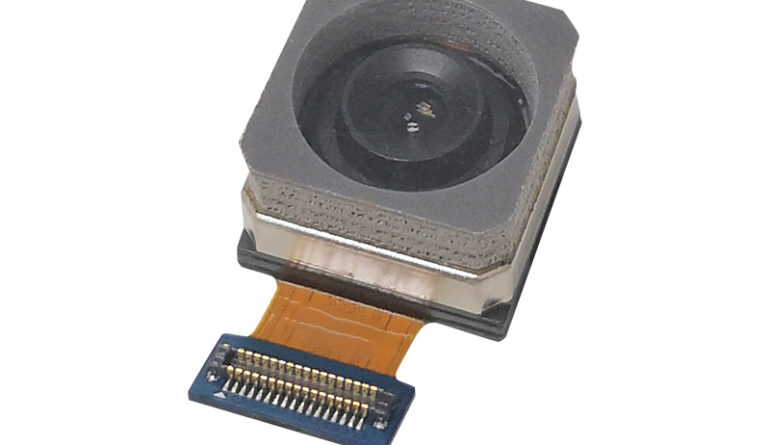The IMX686 is a 6 4-megapixel CMOS active pixel stacked image sensor with a diagonal size of 9.251 mm (1/1.73 type) and a square pixel array. It uses Sony's back-illuminated stacked CMOS image sensor to achieve high-speed image capture through column-parallel A/D conversion circuits, and high sensitivity and low-noise images (compared to conventional CMOS image sensors) through a back-illuminated imaging pixel structure. R, G and B pigment primary color mosaic filters are used. It operates with four power supply voltages: analog 2.9 V and 1.8 V, digital 1.1 V and 1.8 V input/output interfaces, achieving low power consumption.
Functions and Features:
Back-illuminated stacked CMOS image sensor
Quad Bayer Coded (QBC) color filter arrangement
Phase Detection Auto Focus (PDAF)
High frame rate
30fps@full resolution (QBC re-mosaic)
30fps@QBC-HDR
30fps@V2H2 QBC-HDR
120fps@2×2 adjacent pixel binning (16:9)
240fps@2×2 adjacent pixel binning V2H2 (16:9)
High signal-to-noise ratio (SNR)
Dual sensor synchronous operation
Built-in 2D dynamic defective pixel correction (DPC)
Lens shading correction (LSC)
Built-in temperature sensor
Output video formats are RAW10, RAW8, RAW14 (QBC HDR, no local tone mapping)
QBC re-mosaic function
Super Night Mode
QBC HDR function
Two PLLs for generating independent clocks for pixel control and data output interfaces
◆CSI-2 serial data output
MIPI D-PHY 2lane/4lane, Max. 2.5Gbps/lane, D-PHY specification ver. 1.2 compliant
MIPI C-PHY 1/2/3 three-lane, Max. 4.5Gsps/three-lane, compliant with C-PHY specification version 1.2. Compliant with version 1.2
◆ Two-wire serial communication (supports I
2C "Fast Mode", "Fast Mode Plus" and I3C)
Provides 5K-bit OTP ROM for users
Device structure:
◆CMOS image sensor
Image size: diagonal 9.251 mm (1/1.73 type)
Number of effective pixels: 9344 (H) * 7024 (V) about 65.6 million pixels
Number of effective pixels: 9248 (H) * 6944 (V) about 64.2 million pixels
Chip size: 8.638 mm (H) * 6.460 mm (W)
Cell size: 0.80 μm (H) * 0.80 μm (V)
Substrate material: Silicon
Dogoozx customized IMX686 camera module:
Dogoozx imx458 imx662 imx675 IMX586 imx686 4k8k 48MP 64MP mipi Camera Module For Sony
About IMX686 camera image sensor FAQ:
Q1: What are the basic parameters of IMX686 image sensor?
A1: IMX686 is a high-performance image sensor known for its high resolution and large sensor size. Taking the Redmi K30 Pro as an example, the IMX686 sensor equipped with its rear main camera is 1/1.73 inches in size and has 64 million pixels. These parameters enable IMX686 to capture more details and improve image quality.
Q2: What common problems may IMX686 image sensors encounter during use?
A2: IMX686 image sensors may encounter a variety of problems during use, including but not limited to:
"Hot pixel" phenomenon caused by overheating: After working for a period of time, the temperature of the sensor increases, which may lead to increased intrinsic excitation of semiconductor materials, reduced signal-to-noise ratio (S/N), increased noise, and the formation of "hot pixels". This is caused by chip overheating, which can be slowed down by backend or software processing, but cannot be eradicated.
Analog voltage problem: Low or unstable analog voltage may cause the image sensor to malfunction, such as requiring stronger light to sense the image, or color cast, stripes, etc.
Mechanical damage: As a precision device, the IMX686 image sensor may be damaged by mechanical shock or vibration, affecting the image quality.
Electromagnetic interference: Strong electromagnetic fields or electromagnetic waves may damage the image sensor or affect its normal operation.
Circuit problems: Including data line short circuit, open circuit, wrong connection and other problems, which may cause water ripples, contour lines or large-area color deviation in the image.
Timing problems: If the distance between Hsync and high-speed lines is too close or too long, coupling may occur, resulting in data acquisition misalignment and purple or green stripes.
Q3: How to solve the "hot pixel" phenomenon caused by overheating of the IMX686 image sensor?
A3: To solve the "hot pixel" phenomenon caused by overheating of the IMX686 image sensor, the following measures can be taken:
Optimize heat dissipation design: Ensure that the camera has a good heat dissipation environment when in use, and reduce the temperature rise of the sensor when working.
Software processing: Process the image through the backend or software algorithm to reduce the noise problem caused by overheating. This usually includes steps such as noise suppression and color correction.
Reduce power consumption: Without affecting the image quality, reduce power consumption by adjusting the camera settings to reduce the workload of the sensor.
Q4: How should I troubleshoot and solve the problem of color cast or stripes on the IMX686 image sensor?
A4: When you encounter the problem of color cast or stripes on the IMX686 image sensor, you can troubleshoot and solve it from the following aspects:
Check the analog voltage: Make sure that the analog voltage is stable and meets the working requirements of the sensor. If there is a problem, adjust or replace the power supply.
Check the circuit connection: Check whether the data line is connected correctly, whether there is a short circuit, open circuit or wrong connection. If there is a problem, reconnect or replace the data line.
Check the timing settings: Check whether the timing settings of signals such as Hsync, PCLK, and MCLK are correct. If there is a problem, adjust the timing settings or modify the circuit layout.
Clean the sensor: If there are stains or impurities on the surface of the sensor, it may also cause imaging problems. You can try to use professional cleaning tools or sprays to clean it.



